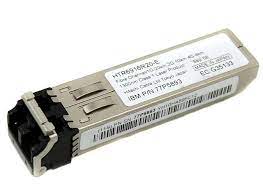Kinds of handset modules can be characterized into different classes dependent on their presentation attributes and end-use. Explore Hitachi Fibre SFP Transceiver are the high quality and high performing product at best price.
Qualities ordinarily utilized in fiber optic handset characterization include: fiber mode, move rate, transmission distance, frequency.
Every one of these classifications is talked about in more detail underneath.
Fiber optic handset modules with comparative highlights are additionally gathered and grouped into bundles, otherwise called structure factors. There are right now 6 essential structure variables of fiber optic handsets in like manner use: SFP+, SFP, GBIC, X2, XFP, XENPAK, and turning out to be famous are QSFP+ for 40Gbps and CFP for 100Gbps handsets.
Fiber Mode
Maybe the most key characterization of fiber optic handsets is the “mode type” of the fiber with which it is planned to be utilized. The two essential characterizations of fiber mode types are: multimode and singlemode. Multimode filaments, with center breadths ordinarily in the scope of 50 to 62.5 microns, have significantly bigger center measurements than singlemode strands, which have center sizes in the 8 to 9 micron range.
Multimode filaments, with their bigger center opening, permit various methods of light to couple into the fiber. These different methods of light proliferate at marginally various velocities as they travel down the fiber. The outcome is a ‘spreading’ of heartbeats alluded to as Modal Dispersion. This kind of multimode-explicit scattering seriously restricts the transmission distance feasible over multimode fiber as stood out from singlemode fiber.
Thus, while multimode fiber itself it not generously unique in cost than singlemode, the cost of multimode handsets are normally a small amount of the cost of singlemode ones.
As demonstrated in the table underneath, there are a few famous sorts of multimode fiber being used today. OM1 and OM2 strands are fitting for low speed transmission, like 100Mbps to 1Gbps, which regularly use LED transmitters. OM3 and OM4 are alluded to as laser-enhanced multimode strands, as lasers are utilized as optical sources at 10Gbps and quicker.
Singlemode filaments, as their name infers, just permit a solitary method of light to couple into the center. This totally dispenses with the Modal Dispersion issue. Singlemode fiber transmission is restricted by a few different types of scattering, eminently Chromatic and Polarization Mode. Notwithstanding, these are much ‘more fragile’ scatterings, permitting singlemode fiber to help transmission separates a few significant degrees longer than multimode fiber.
The most widely recognized sort of singlemode fiber is named “OS1” by the ITU and is otherwise called “standard singlemode fiber”. While there are other singlemode fiber types (for example scattering moved fiber, non-zero scattering moved fiber), most optical handsets are essentially indicated for activity over OS1.
Singlemode sources can work over brief distances of multimode fiber however are more costly, so it looks bad to utilize them in such applications.
Move Rate
Fiber optic handset modules are regularly ordered dependent on their information move rates. There are five famous rate classifications utilized in fiber optic handset order: 100GBase, 40GBase, 10GBase, 1000Base and 100Base. These rates allude to the speed at which a fiber optic handset can send information over Ethernet.
There are various other exchange rate pecking orders related with certain subsectors of the market. Mainstream rates for Fiber Channel, truly utilized for rapid supercomputer interconnection and Storage Area Networking (SANs), are: 1Gbps, 2Gbps, 4Gbps, 8Gbps, and 16Gbps. Broadcast communications networks have been utilizing the SONET/SDH multiplexing progressive system for a long time with optical transmission paces of: 155Mbps, 622Mbps, 2.488Gbps, 9.953Gbps and 39,813Gbps.
Transmission Distance
Not all fiber optic handset modules can send information a similar distance. As referenced over, one significant distinction is multimode versus singlemode handsets. For multimode applications, both exchange rate and the particular kind of fiber influence the transmission distance. For singlemode applications, move rate is the prevailing component as for transmission distance.
Frequency
Infrared light is utilized in the transmission of information over fiber optic organizations. A frequency is the estimation of the distance between progressive peaks in the light wave. Fiber optic handset modules normally send information at one of three essential frequencies: 850nm, 1310nm or 1550nm.
The explanations behind the prevalence of these three frequencies are twofold: 1) fiber optic lessening is a lot of lower at these frequencies; and 2) the US National Institute of Standards and Technology (NIST) gives metered alignment to testing fiber optics at these frequencies.
Multimode fiber is intended to work at 850nm and 1300nm frequencies, while singlemode fiber is improved for 1310nm and 1550nm frequencies. In the singlemode space, better degrees of frequencies are conceivable inside both the 1310nm and 1550nm ‘windows’ utilizing exactness constructed transmitters. The two generally normal and normalized plans are CWDM (Coarse Wavelength Division Multiplexing) and DWDM (Dense Wavelength Division Multiplexing).
